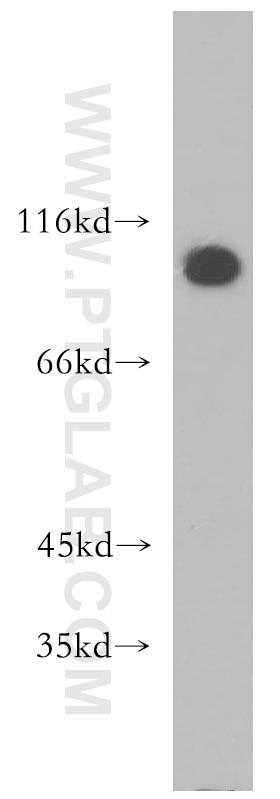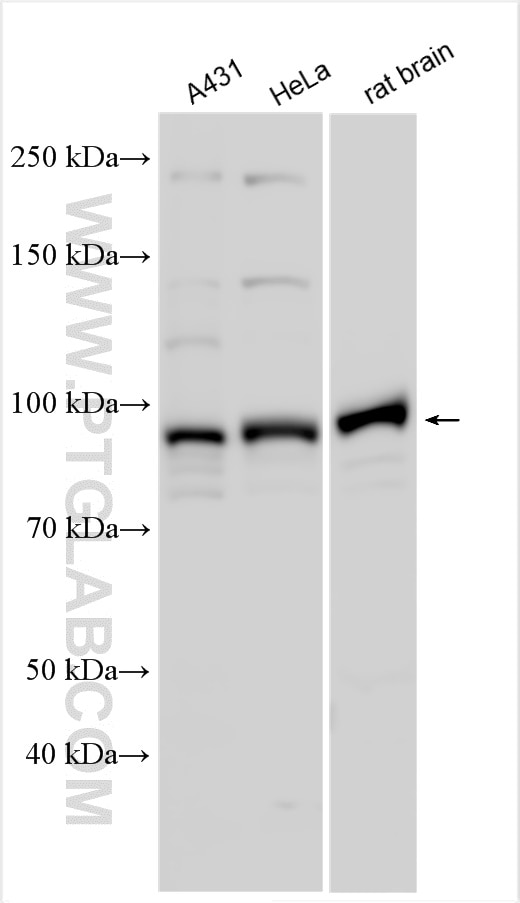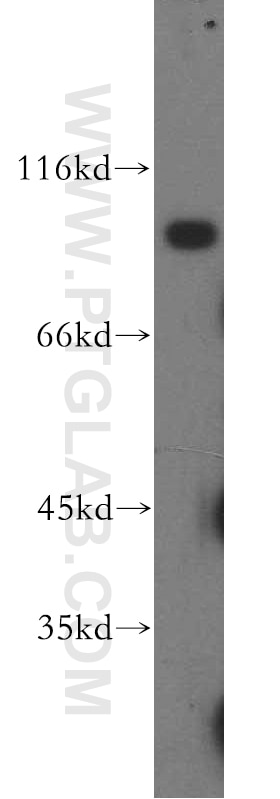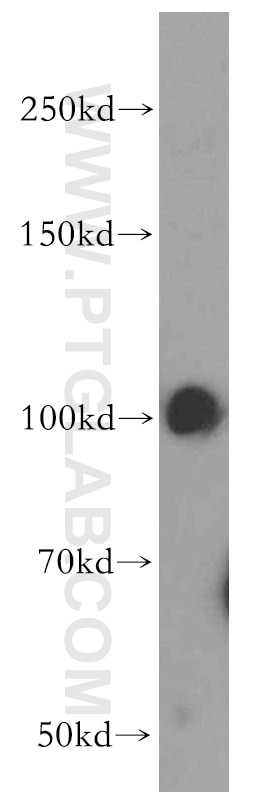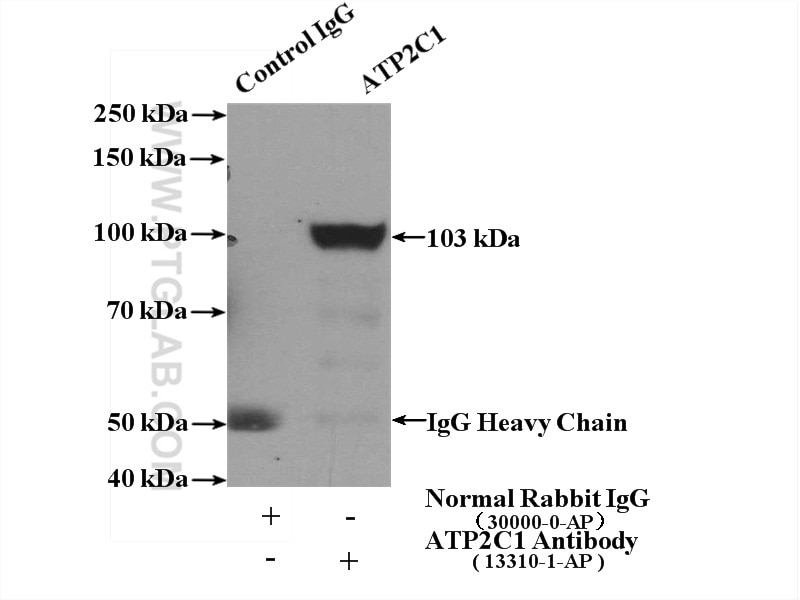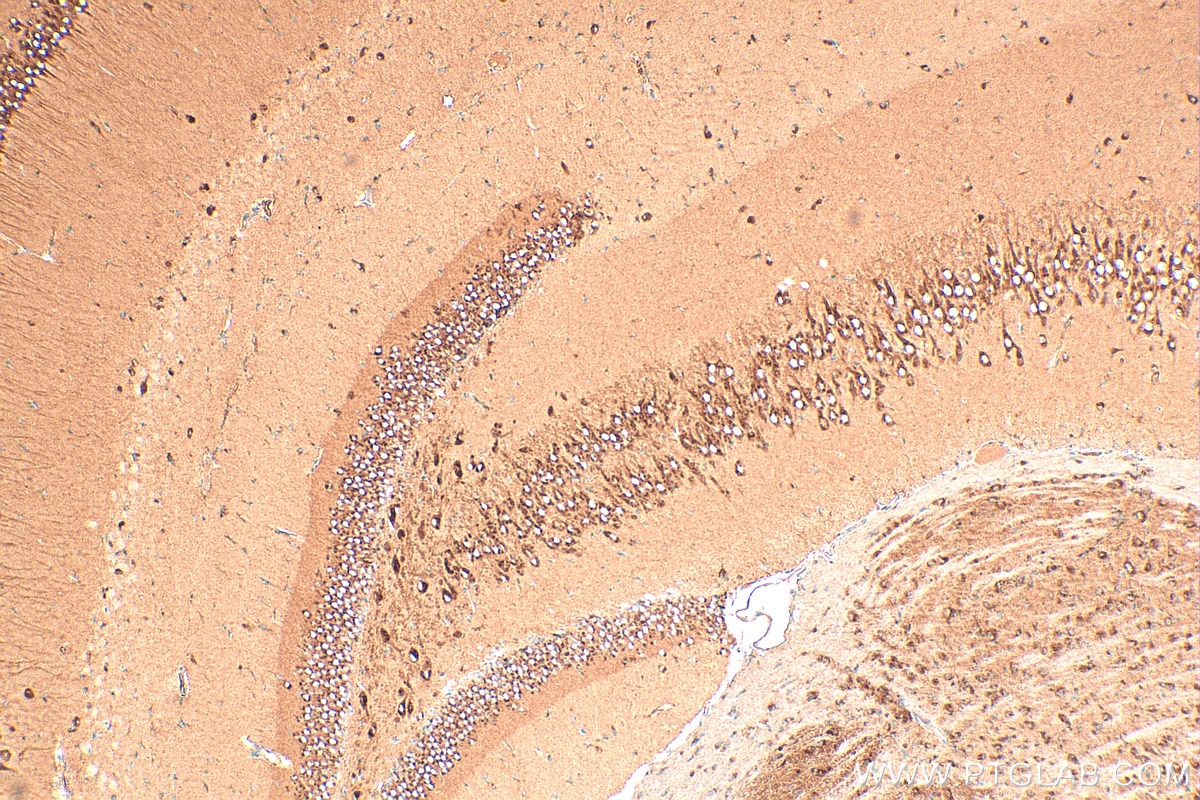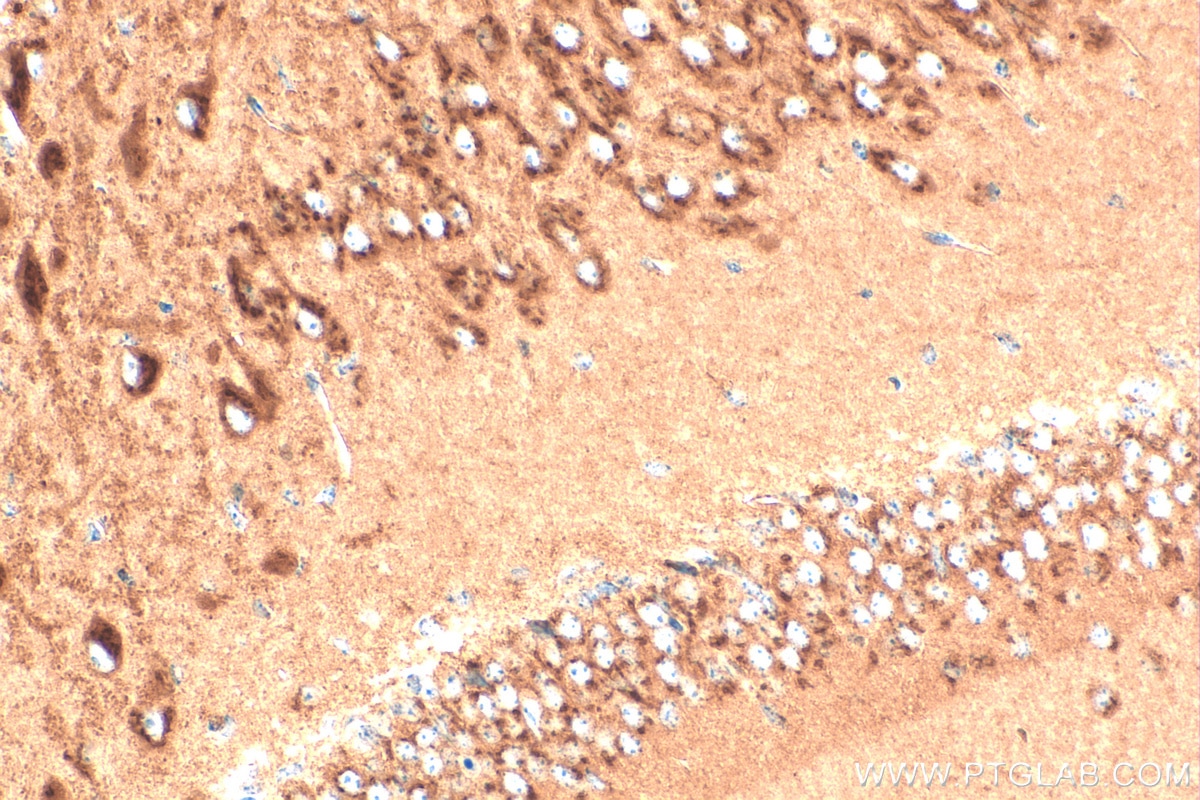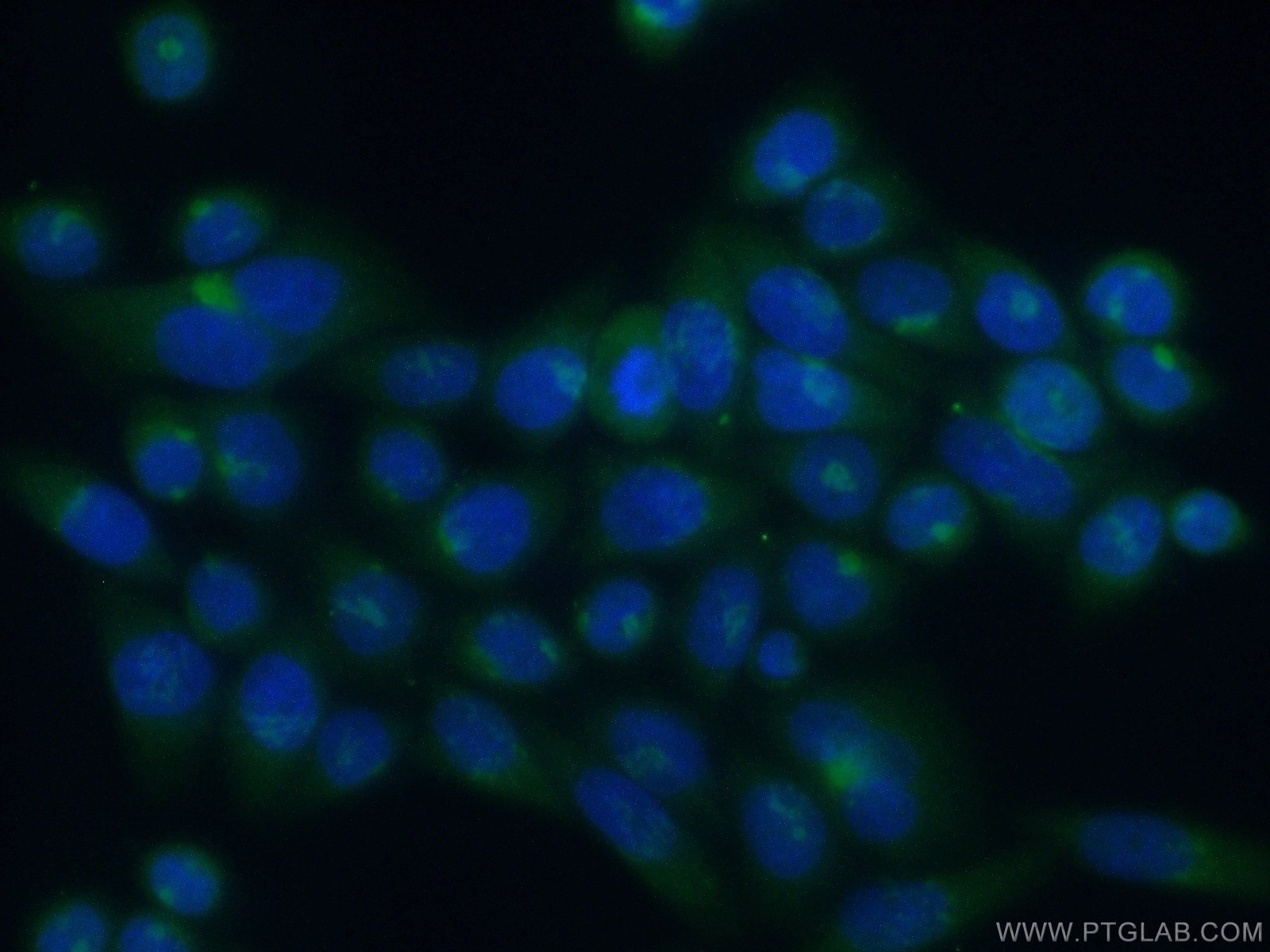Anticorps Polyclonal de lapin anti-ATP2C1
ATP2C1 Polyclonal Antibody for WB, IP, IF, IHC, ELISA
Hôte / Isotype
Lapin / IgG
Réactivité testée
Humain, rat, souris
Applications
WB, IHC, IF/ICC, IP, ELISA
Conjugaison
Non conjugué
N° de cat : 13310-1-AP
Synonymes
Galerie de données de validation
Applications testées
| Résultats positifs en WB | cellules A431, cellules HeLa, tissu cérébral de rat, tissu cérébral humain |
| Résultats positifs en IP | tissu rénal de souris |
| Résultats positifs en IHC | tissu cérébral de souris, il est suggéré de démasquer l'antigène avec un tampon de TE buffer pH 9.0; (*) À défaut, 'le démasquage de l'antigène peut être 'effectué avec un tampon citrate pH 6,0. |
| Résultats positifs en IF/ICC | cellules HeLa |
Dilution recommandée
| Application | Dilution |
|---|---|
| Western Blot (WB) | WB : 1:500-1:3000 |
| Immunoprécipitation (IP) | IP : 0.5-4.0 ug for 1.0-3.0 mg of total protein lysate |
| Immunohistochimie (IHC) | IHC : 1:50-1:500 |
| Immunofluorescence (IF)/ICC | IF/ICC : 1:20-1:200 |
| It is recommended that this reagent should be titrated in each testing system to obtain optimal results. | |
| Sample-dependent, check data in validation data gallery | |
Applications publiées
| WB | See 4 publications below |
Informations sur le produit
13310-1-AP cible ATP2C1 dans les applications de WB, IHC, IF/ICC, IP, ELISA et montre une réactivité avec des échantillons Humain, rat, souris
| Réactivité | Humain, rat, souris |
| Réactivité citée | Humain, souris |
| Hôte / Isotype | Lapin / IgG |
| Clonalité | Polyclonal |
| Type | Anticorps |
| Immunogène | ATP2C1 Protéine recombinante Ag4143 |
| Nom complet | ATPase, Ca++ transporting, type 2C, member 1 |
| Masse moléculaire calculée | 919 aa, 101 kDa |
| Poids moléculaire observé | 95-103 kDa |
| Numéro d’acquisition GenBank | BC028139 |
| Symbole du gène | ATP2C1 |
| Identification du gène (NCBI) | 27032 |
| Conjugaison | Non conjugué |
| Forme | Liquide |
| Méthode de purification | Purification par affinité contre l'antigène |
| Tampon de stockage | PBS avec azoture de sodium à 0,02 % et glycérol à 50 % pH 7,3 |
| Conditions de stockage | Stocker à -20°C. Stable pendant un an après l'expédition. L'aliquotage n'est pas nécessaire pour le stockage à -20oC Les 20ul contiennent 0,1% de BSA. |
Informations générales
ATP2C1, also known as hSPCA1, belongs to the family of P-type cation transport ATPases. ATP2C1 is a Golgi-localized ATPase that mediates Golgi uptake of cytosolic Ca(2+) and Mg(2+) and has a role in regulating Ca(2+) and Mn(2+) cellular content (PMID: 11741891). ATP2C1 is found in most tissues except colon, thymus, spleen, and leukocytes. It is expressed in keratinocytes (PMID: 15831496, 14632183). Defects in ATP2C1 cause Hailey-Hailey disease (HHD)(PMID: 10615129, 28035777).
Protocole
| Product Specific Protocols | |
|---|---|
| WB protocol for ATP2C1 antibody 13310-1-AP | Download protocol |
| IHC protocol for ATP2C1 antibody 13310-1-AP | Download protocol |
| IF protocol for ATP2C1 antibody 13310-1-AP | Download protocol |
| IP protocol for ATP2C1 antibody 13310-1-AP | Download protocol |
| Standard Protocols | |
|---|---|
| Click here to view our Standard Protocols |
Publications
| Species | Application | Title |
|---|---|---|
Front Cell Dev Biol A Negative Feedback Loop in Ultraviolet A-Induced Senescence in Human Dermal Fibroblasts Formed by SPCA1 and MAPK. | ||
Clin Cosmet Investig Dermatol The Pathogenic Mechanism of the ATP2C1 p.Ala109_Gln120del Mutation in Hailey-Hailey Disease | ||
BMC Pulm Med Tetramethylpyrazine ameliorates endotoxin-induced acute lung injury by relieving Golgi stress via the Nrf2/HO-1 signaling pathway | ||
Zhong Nan Da Xue Xue Bao Yi Xue Ban Ultrashort wave alleviates oxygen-glucose deprivation/reoxygenation injury via up-regulation of SPCA1 expression in N2a cells |
Avis
The reviews below have been submitted by verified Proteintech customers who received an incentive forproviding their feedback.
FH Boyan (Verified Customer) (09-12-2019) | This antibody could detect endogenous ATP2C1 both for WB and IF. For WB, besides the band at the expected molecular weight, it also gives a non specific band at ~ 150 kd.
|
